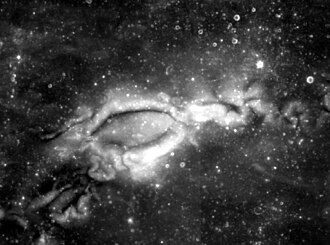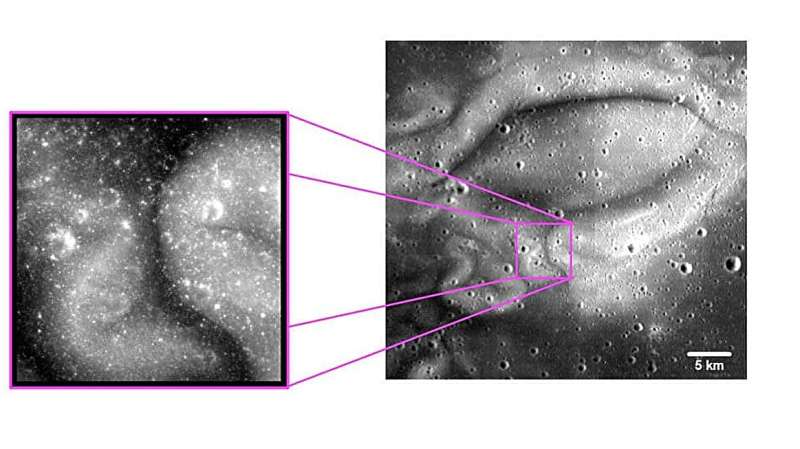Differences between the bright and dark patches in lunar swirls go beyond albedo variations; they include differences in the structure of the lunar soils and the grains within those soils.
Lunar swirls are alternating high- and low-albedo markings on the moon found in both mare—dark, level basalt plains—and the bright highland terrains. Their origin remains a point of debate.
“The scientific community has long been examining the differences between the bright and dark regions in these distinctive albedo markings,” said Deborah Domingue, Senior Scientist at the Planetary Science Institute and lead author of “Photometric Properties Within Reiner Gamma Swirl—Constraining Formation Mechanisms” published in The Planetary Science Journal.

PSI scientists John Weirich, Frank Chuang, Samuel Courville, Roger Clark, Amanda Sickafoose, Eric Palmer, and Robert Gaskell are co-authors.
“While these rather enigmatic features are found in many places on the moon’s surface, Reiner Gamma is the archetype lunar swirl. They are associated with magnetic anomalies and until recently were thought to ‘swirl’ across the surface unaffected by topography,” Domingue said.
“Recent work by a group at PSI has shown that there is a correlation with topography, where the bright ‘on-swirl’ areas are, on average, a few meters lower than the dark ‘off-swirl’ areas. The work in this paper takes a region in the Reiner Gamma swirl, where we have measured topographic variations, and examines if there are also variations in the regolith (soil) structure between on- and off-swirl.”

The paper finds that the intrinsic brightness is different, which is no surprise as differences in brightness are what define these features. However, the source of the brightness differences can vary, and this is explored in the paper, Domingue said.
Brightness variations can be due to differences in composition (what the regolith is made of), porosity (how compact the surface is), and the size of the grains comprising the regolith. This study indicates that these brightness changes are dominated by compositional differences and not differences in compaction. However, differences in the size of the regolith grains could still be a contributing factor.
“Grain size differences might also contribute to the brightness variations, but we do not see differences in compaction within our study area. We also note differences in grain types and structures between bright and dark area soils. This indicates that there is more than one process at work to form these features,” Domingue said.

Currently, there are three hypotheses about the formation of lunar swirls:
- Shielding of the solar wind by the magnetic anomalies prohibits space weathering.
- Dust is levitated and sorted by the magnetic field.
- These features are the remnants of impacts with comets.
The paper goes through the evidence pro and con for each of these formation hypotheses. The structural properties found by this study indicate that it’s a combination of these processes at work, not just one.
“There are a couple of processes that have been put forth for explaining the presence of these features on the moon, yet the evidence is contradictory. This paper is important because it adds another set of properties—regolith structure—to the evidence. Interpretation of this new evidence, in context of past work, all indicate that these features are the result of a complex interaction of multiple processes, and that laboratory studies will be needed to deconvolve the relative roles of these processes in the formation of lunar swirls,” Domingue said.
In summary, lunar swirls present a fascinating puzzle with their unique bright and dark patches. Understanding the ground conditions that impact lunar swirls will bring us closer to unraveling the mysteries of these features.
Further research and laboratory studies are essential to deconvolve the relative roles of the processes involved in the formation of lunar swirls. As scientists continue to explore and analyze the data, our knowledge of lunar swirls and their origins will undoubtedly deepen, shedding light on the complex interactions shaping the moon’s surface.








